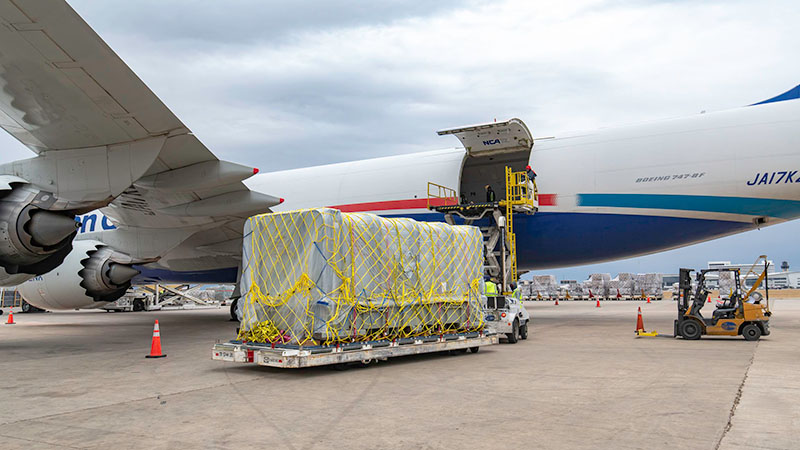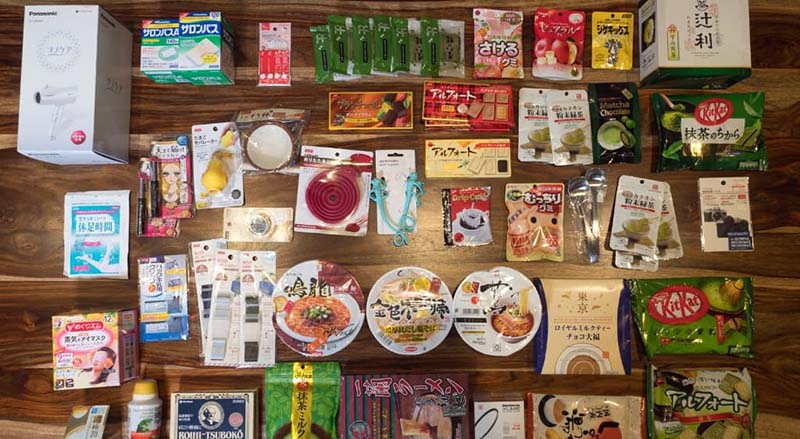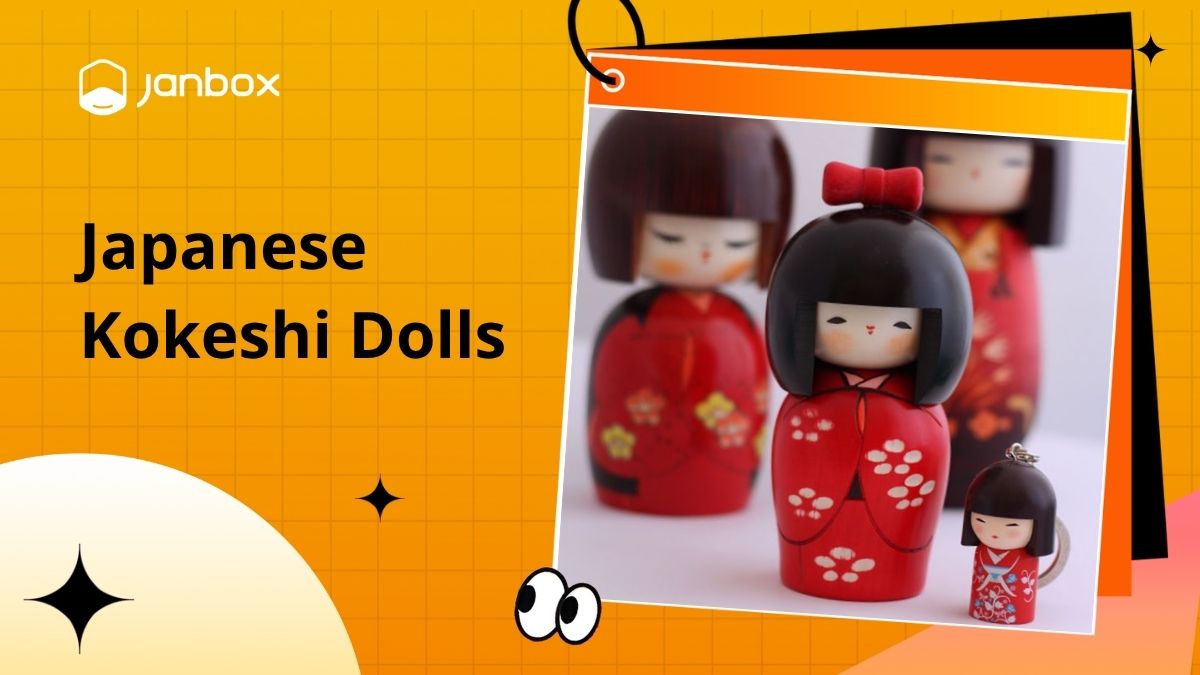Shipping from Japan to Philippines can be intricate, especially when considering the “shipping from Japan to Philippines price” and figuring out “how long does it take to ship to the Philippines?”. With a variety of shipping options on the market, it is essential to know both the pricing and the delivery times to select the best option.
In this blog, Janbox will provide valuable insights into various shipping services, help you make an informed decision. Read on to gather all the knowledge required to effectively purchase and ship items from Japan to the Philippines.
1. Options to ship from Japan to Philippines and delivery time frame
Most people consider standard postal services the go-to method for shipping between Japan and the Philippines. However, there are alternative options based on the size and nature of your shipment that could help you save a substantial amount of money.
Your shipping fee from Japan to the Philippines can be greatly affected by the shipping method you choose. The sections below will explore 6 shipping options, providing you with the insights needed to choose the most economical and appropriate one for your shipment.

1.1. Air freight
Using air freight works well for smaller shipments, provided they weigh at least 45 kg. For items under 45 kg, air freight is not the best option. Moreover, air freight cannot be used to send parcels to family or friends in the Philippines.
For urgent deliveries, time-sensitive shipments, or perishable items, air freight is a suitable choice. It also provides increased security, which helps protect high-value goods from damage or theft during transit.
When it comes to delivery speed, air freight is the quickest, with times between 2 and 7 days, depending on the service (express or standard) and destination. For example, if you have a shipment in Tokyo, which you buy from Japan ship to Philippines (Manila), the process involves trucking the package from Tokyo to the international airport, flying it to Ninoy Aquino International Airport, and finally delivering it by road to the Manila destination. This route generally takes about 7 days, factoring in all handling and processing times at each terminal.
1.2. Courier services
FedEx, DHL, and UPS are reputable courier services that will deliver shipments to your door. This service eliminates the need for you to deal with customs clearance, as the courier handles this for you. Most couriers set their pricing for small packages beginning at 0.5kg, and they have separate rates for documents. FedEx, for example, offers express delivery along with their air freight service.
Courier companies are more appropriate for sending smaller packages and non-personal items. They often hesitate to handle personal effects because of potential customs issues. Nonetheless, for general goods or retail items, they are a dependable and efficient choice. Also, the transit time can vary between shipping companies. The following information provides more specifics:
- DHL Express: Recognized for prompt and dependable service, DHL can ensure door-to-door delivery with the added security of tracking and insurance. Delivery time usually ranges from 2 to 5 days.
- FedEx: Features both priority and economy services, with delivery windows spanning 3 to 7 days, along with complete tracking and customs assistance.
- UPS: Offers different shipping choices, including economy and express, with tracking and delivery typically occurring in 3-7 days.
1.3. Postal services

There are multiple postal services to consider when shipping items from Japan to the Philippines. These options differ in terms of delivery duration, cost, and additional features, enabling you to pick the most appropriate service for your situation.
- Japan Post Airmail: A budget-friendly alternative for lightweight parcels, usually delivered in 12-14 days, with tracking available for those sent as registered mail.
- SAL (Surface Air Lifted) Mail: An intermediate-cost method that utilizes both sea and air transportation, with an expected delivery time of 2-3 weeks.
- Surface Mail: The option with the lowest cost, yet the slowest, depending on sea freight with delivery periods ranging from 1 to 3 months.
1.4. Sea freight
Shipping goods via sea freight from Japan to the Philippines is a cost-efficient solution, particularly for bulky or large shipments. This option is perfect for non-urgent deliveries, with transit times usually ranging from 2 to 4 weeks, depending on the origin and destination ports. Sea freight typically presents two choices:
- LCL (Less than Container Load): Designed for substantial shipments that do not fill up a whole container. It offers a cost advantage, but the delivery period is generally between 15 and 30 days.
- FCL (Full Container Load): Suited for extensive shipments that can fill a whole 20ft or 40ft container. The shipping duration is comparable to LCL, but it is more secure and economical for transporting bulk goods.
Tracking options are generally available with most sea freight services, and some providers also include insurance to boost security. Utilizing sea freight for shipping from Japan to the Philippines is a viable option for those looking to save on costs while transporting substantial loads.
The fastest maritime route from Japan to the Philippines involves a journey of about 5 days and 10 hours, departing from Kobe (JPUKB) and reaching Manila (PHMNL). Ships travel this route every 1-2 weeks, with ONE being a regular service provider.
Shipping from Japan to Philippines by sea is cost-efficient
1.5. Engaging in proxy shopping services
A proxy service enables you to order Japanese goods you may have missed out on. If you neglected to buy an item while in Japan or encountered an out-of-stock situation, this service is quite practical. If the item remains unavailable before you leave the country, you might leave Japan feeling unsatisfied. Proxy websites are here to help you find those missing items.
Some of the key proxy services include Janbox, Buyee, and Tenso, which help with purchasing goods from Japanese retailers and arranging shipment to the Philippines. They provide several shipping choices, ranging from courier services to postal methods.
Janbox can help with purchasing goods from Japanese retailers
1.6. Freight Forwarders and Consolidators
Freight forwarders and consolidators specialize in shipping solutions from Japan to the Philippines, accommodating both small and large-scale shipments. They take care of the entire shipping process, from cargo collection and consolidation to delivery, guaranteeing the process smooth and efficient. Some notable freight forwarders and consolidators include:
- Nippon Express: Provides both air and ocean shipping solutions, including services to combine shipments and minimize costs.
- LBC Express: A top choice for shipping to the Philippines, LBC provides air and sea freight options with comprehensive tracking and flexible delivery services.
>>> Read more: Shipping from Japan to Singapore Cost & Time: Beginner’s Guide
2. How Much Is Shipping From Japan To Philippines?
Shipping cost from Japan to Philippines mainly depends on these key elements:
- Shipping Method: The selection of air freight versus sea freight plays a significant role in determining the cost. Air freight typically costs more but offers quicker delivery, while sea freight is less expensive but slower.
- Package Weight and Dimensions: Larger and heavier shipments incur higher fees. Courier and freight services base their rates on a combination of actual weight and volumetric weight (the package’s dimensions).
- Shipping Distance and Route: The distance between the departure and arrival points and the specific route taken can affect shipping costs, especially if transshipment or multiple stops are required.
- Fuel Surcharges: Fluctuating fuel prices may prompt shipping carriers to impose additional fees, which can raise the total cost of shipment.
- Customs Duties and Taxes: Shipping expenses may rise due to the imposition of import duties, taxes, and other fees by the Philippine customs authorities.
Larger and heavier shipments can incur higher fees
To assist you in understanding how much shipping from Japan to Philippines costs through different courier services, Janbox has compiled the following table (*):
| Unit | Weight | Price |
| FedEx | 0,5 kg | 3.499 JPY |
| 1 kg | 3.956 JPY | |
| 2 kg | 4.927 JPY | |
| DHL | 0,5 kg | 3.192 JPY |
| 1 kg | 3.312 JPY | |
| 2 kg | 3.432 JPY | |
| EMS | 0,5 kg | 1.900 JPY |
| 1 kg | 3.150 JPY | |
| 2 kg | 4.550 JPY | |
| Japan Post airmail | 0,5 kg | 790 JPY |
| 1 kg | 1.490 JPY | |
| 2 kg | 2.690 JPY | |
| Japan Post surface mail | 0,5 kg | 1.090 JPY |
| 1 kg | 1.850 JPY | |
| 2 kg | 2.980 JPY |
(*) Note: For comparison purposes, we have selected five frequently used weight categories: 0.5 kg, 1 kg, 2 kg, 5 kg, and 10 kg.
3. How To Ship From Japan To Philippines With Janbox?
Wondering how to ship items from Japan to Philippines? With so many carriers, shipping methods, and regulations to navigate, the shipping process can seem quite complex. However, with the right partner, shipping from Japan to Philippines can be simple and worry-free. Let’s go through these steps to help you purchase the items you love from Japan and ship them seamlessly to the Philippines using Janbox.
3.1. Search for an exporter
If you want to successfully ship from Japan to the USA, it’s essential to understand reputable distribution companies. One such company is Janbox, a prominent name in Japan’s shipping and purchasing sector. You can order various items from multiple Japanese e-commerce sites or online stores. If you need guidance on shipping from Japan to Singapore, Janbox can provide you with the necessary information.
3.2. Send the goods information to Janbox Express
You should specify the exact name of the item as listed on the website, along with the quantity you need. If applicable, fill in the fields for size, color, and design, as this information is necessary to complete your order. Include any additional details in the note section. Be sure to review all your entries before submitting!
3.3. International payments
To purchase items from Japan and have them shipped to the USA, you need to pay the full amount upfront. First, cover the cost of the product, and then select one of the two available payment options to complete your order.
Method 1: Use your Janbox wallet for payment. This involves adding funds to your Janbox wallet, where one point equals one yen. When you choose this payment method, Janbox will deduct the required number of points from your balance. Any remaining points can be used for future orders.
Method 2: You can pay using a credit card or PayPal. Just transfer the necessary amount of money to Janbox based on the order value. Once the payment is received, your purchase will be confirmed.
3.4. Choose the form of shipping goods to the inland
Air freight is generally more costly for shipping items from Japan to other locations compared to ocean freight, making it a less popular option. Due to the higher expenses and fuel constraints, large shipments are not typically transported by air. Airports have stricter security measures, so air freight is ideal for smaller, high-value items.
Ocean freight is the preferred shipping method for many importers due to its cost-effectiveness. It offers an economical solution for transporting both small and large shipments compared to air freight. Additionally, costs can be further reduced by selecting the right type of container. Full Container Load (FCL) is suitable for larger, heavier shipments that occupy a 20’DV or 40’DV container. For smaller shipments that do not fill an entire container, Less Than Container Load (LCL) is the appropriate choice.
3.5. Wait for the goods to arrive at the domestic warehouse and pick up the goods
All of the necessary tasks have now been completed. Let Janbox Express handle the rest. Then you can sit back and wait for the goods to arrive and get them to your warehouse.
>>> Read more: How To Buy From Japan – Janbox Proxy Shopping Service
4. Why Is Janbox The Best Proxy Shopping Service For Shipping From Japan To The Philippines?
As previously stated, using a shopping proxy site is one of the best options when it comes to how to ship items from Japan to the Philippines. But there are lots of shopping proxy sites out there that can make you overwhelmed. So for those of you who are getting confused, you should consider using Janbox.
Janbox is an online marketplace that connects people from all over the world with Japan and its products. Our site is built for cross-border commerce, with plenty of customer service and a variety of shipping and payment options to make shopping from Japan as simple and straightforward as possible.
Here are some of the benefits of using Janbox:
4.1. One marketplace for all Japanese items
You can buy from any Japanese online marketplace or auction using Janbox. Simply add the item URL link to your cart and proceed to checkout. If you’re unfamiliar with Japanese online shopping, you can click on the “Other shops” tab to see a plethora of other online stores organized into categories.
We also linked our system to the three largest e-commerce platforms in Japan for your convenience: Rakuten, Amazon.co.jp, and Yahoo! Auctions. You can now search for products and browse categories from these shops and auctions in English or any other language from a single location! Awesome, isn’t it?
4.2. No language barrier
Janbox has a dedicated team of multilingual customer service managers available 24 hours a day, 7 days a week to assist you in communicating with Japanese store owners, whether it’s for questions, requests, or other matters. Over time, we’ll add more language versions, all staffed by friendly, professional native speakers who can assist you in your native tongue at any time.
Do you want to know more about that item you’ve had your eye on? In seconds, ask a question about it directly from the item page, and our multilingual support managers will translate your query into Japanese and send it directly to the seller for clarification. There are no barriers to communication here!
4.3. Transparency, monitoring orders statuses
You can see the full breakdown of your expenses in your account: all of the prices and operations related to your items are visible. From the moment the order is made until the parcels are delivered to the client, we track and report on the transaction. So you will always keep track of their whereabouts at any time.
4.4. Safe packaging
Typically, Japanese online stores do not pack shipments securely. That is insufficient to prevent damage during international shipping. So we have come with an extra service. That is repacking your packages. This ensures that your packages can be shipped internationally with minimal risk.
5. The Attractiveness Of Japanese Goods

Japan is one of the most beautiful countries to visit, with unique landscapes, well-preserved culture, and rich, diverse history. All of those will makes a trip to Japan a true one-of-a-kind experience that you won’t find anywhere else. Japanese goods, in particular, are particularly appealing to foreigners. Why? Let’s see how many different ways you’ll fall in love with Japanese goods.
Lots of beautiful (and super cute!) design options.
Japanese goods are quite diverse and rich in designs and types, with many well-known international brands. As a result, whatever you want, there will be a Japanese-made product that meets your needs.
High-quality, made-to-last products.
Inexpensive Japanese goods are not synonymous with low-quality goods. Japanese manufacturers simply do not cut corners when dealing with customers who have such high expectations.
Reasonable prices
Every customer considers the price of an item first when making a purchase. Because Japanese businesspeople are aware of this psychology, they always offer the most reasonable and affordable price.
6. What Items Can’t Be Delivered?

Janbox, like most other carriers, does not transport hazardous materials and substances such as ammunition, weapons, acids, mercury, bacteria, or viruses. Other packages may be harmed by such items. Prescription drugs, alcohol, tobacco, cigarettes, perishable goods, or original works of art will also not be accepted.
Furthermore, each country has its own set of laws and customs regulations. It’s a good idea to get to know them before shipping. The package is being inspected at the border. If a prohibited item is discovered inside, the package will almost certainly be returned to the sender and, in extreme cases, confiscated by customs.
In addition to complying with international treaties and obligations, Philippine law restricts the importation of certain goods for reasons of national security, environmental and public health protection, order and morality, and order and morality. The following items are prohibited:
- Used clothing and rags;
- Toy guns;
- Right-hand drive vehicles;
- Hazardous waste, even in transit into Philippine territory;
- Laundry and industrial detergents containing hard surfactants;
- Polychlorinated biphenyls (PCBs);
- Used motorcycle parts, except engine; and,
- Live piranha, shrimp, and prawns.
>>> Read more: Shipping From Japan To USA – Cost & FAQs
7. FAQs
To quickly know about “How much is the shipping fee from Japan to Philippines?” or “How long does it usually take for shipping from Japan to Philippines?”, and other frequently asked questions related to this topic without reading the full article, we have included a concise answer in the following section.
7.1. What is the cheapest shipping from Japan to Philippines?
The cheapest shipping fee from Japan to Philippines is Japan Post’s surface mail service, which charges 120 JPY for standard letters weighing up to 25 grams. Despite the low cost, this method has the longest delivery time, usually taking between 2 and 3 months.
7.2. How many days shipping from Japan to Philippines?
The duration for shipping from Japan to the Philippines is determined by the method of shipment.
Express Shipping (EMS, DHL, FedEx): 3-7 days.
Standard Air Mail (Japan Post’s Airmail or SAL): 1-2 weeks.
Surface Mail (Japan Post’s Surface Mail): 2-3 months.
The exact delivery time can vary according to factors such as the carrier selected, customs clearance times, and any potential hold-ups.
7.3. How much shipping fee from Japan to Philippines change due to different types of items?
Some types of goods, like perishable, fragile, or valuable items, may demand special handling, packaging, or transportation, resulting in increased shipping costs. Restricted or hazardous items might also attract additional fees or necessitate specialized carriers. Additionally, securing shipping insurance for delicate or valuable goods can raise costs, particularly if the items are considered high-risk and come with higher insurance premiums.
7.4. How often do container ships sail between Tokyo and Manila?
Ships carrying containers depart from Yokohama to Manila on a 1-2 week schedule, usually arriving around 6 days and 18 hours later. The service is provided by shipping companies ONE and Yang Ming.
7.5. How frequently do planes fly between Tokyo and Manila?
Flights between Tokyo Haneda International Airport and Ninoy Aquino International Airport are scheduled 2-4 times daily and are serviced by Japan Airlines, All Nippon Airways, and Philippine Airlines. The flight duration is typically around 4 hours and 41 minutes.
Conclusion
The article has provided the crucial details needed for shipping from Japan to Philippines. If you still have questions, such as “How much does it cost to ship to the Philippines?” from cities other than Tokyo or Manila, please reach out to Janbox for more information. And if you are eager to buy products from Japan, visit Janbox and start filling your shipping cart Japan to Philippines now!
- Website: https://janbox.com
- Email: [email protected]
- Facebook: https://www.facebook.com/janbox.com.en










